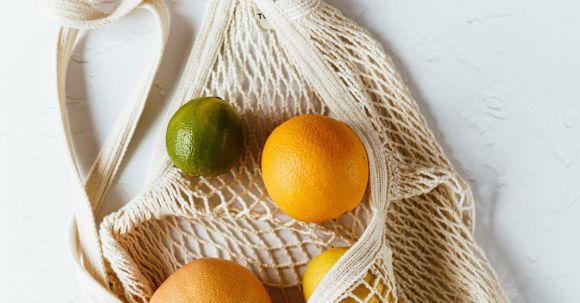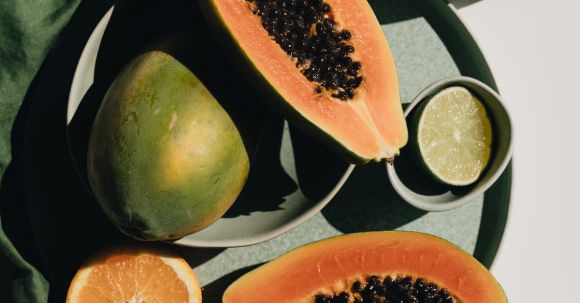Eating healthy doesn't have to break the bank. With some strategic planning and smart choices, you can nourish your body while sticking to a budget. Here are some tips to help you eat healthy without spending a fortune.
Nutrition and meal planning
Protein is an essential nutrient that plays a crucial role in our overall health and well-being. From building and repairing tissues to supporting the immune system, protein is involved in many important functions in the body. But how much protein do we actually need? In this article, we will explore the recommended daily intake of protein and discuss the factors that may influence individual protein needs.
The Role of Protein in the Body
Before we delve into the recommended protein intake, let's first understand why protein is so important. Protein is made up of amino acids, which are the building blocks of our body. These amino acids are used to build and repair tissues, produce enzymes and hormones, and support the growth and development of muscles, bones, and skin.Recommended Daily Protein Intake
The recommended daily protein intake varies depending on factors such as age, sex, weight, and activity level. The general guideline for adults is to consume 0.8 grams of protein per kilogram of body weight. However, this recommendation may not be sufficient for everyone.Factors Influencing Protein Needs
1. Physical Activity Level: Individuals who engage in regular physical activity, especially strength training or endurance exercises, may require a higher protein intake to support muscle repair and growth. Athletes and individuals with physically demanding jobs may need up to 1.2-2.0 grams of protein per kilogram of body weight. 2. Age: As we age, our bodies may become less efficient at utilizing protein. Older adults may benefit from slightly higher protein intake to maintain muscle mass and prevent age-related muscle loss. Aim for 1-1.2 grams of protein per kilogram of body weight if you are over the age of 65. 3. Health Conditions: Certain health conditions, such as kidney disease, may require individuals to limit their protein intake. On the other hand, individuals recovering from surgery or injuries may need more protein to support the healing process. It is important to consult with a healthcare professional to determine the appropriate protein intake for specific health conditions.Sources of Protein
Protein can be obtained from both animal and plant sources. Animal-based sources include meat, poultry, fish, eggs, and dairy products, which are considered complete proteins as they provide all the essential amino acids. Plant-based sources, such as legumes, nuts, seeds, and grains, may require combining different sources to ensure a complete amino acid profile.Meeting Protein Needs
Meeting your daily protein needs can be easily achieved by incorporating a variety of protein-rich foods into your diet. Start your day with a protein-packed breakfast by including eggs or Greek yogurt. Add lean meats or plant-based protein sources to your main meals, and snack on nuts or seeds for an extra boost.Conclusion
Protein is an essential nutrient that plays a crucial role in our overall health and well-being. The recommended daily protein intake varies depending on factors like age, sex, weight, and activity level. By understanding these factors and incorporating a variety of protein-rich foods into our diet, we can ensure that we are meeting our individual protein needs. Remember, consulting with a healthcare professional is always recommended to determine the appropriate protein intake for your specific circumstances.
Eating a diet rich in fruits and vegetables is essential for maintaining good health. They provide essential vitamins, minerals, and antioxidants that help protect against chronic diseases. However, many people struggle to incorporate enough of these nutritious foods into their daily meals. If you find yourself in this situation, don't worry! Here are some practical tips to help you add more fruits and vegetables to your diet.
Diversify Your Choices
One of the keys to adding more fruits and vegetables to your diet is to diversify your choices. Instead of relying on the same few options, try to experiment with different varieties. For example, if you usually eat apples and bananas, consider adding berries, oranges, or kiwis to your cart. Similarly, instead of sticking to common vegetables like broccoli and carrots, explore options like spinach, bell peppers, and zucchini. By incorporating a wide range of fruits and vegetables, you not only enhance the nutritional value of your diet but also make it more exciting and enjoyable.Make Them the Star
Another effective way to increase your fruit and vegetable intake is to make them the star of your meals. Instead of considering them as mere side dishes, try to build your meals around them. For instance, you can create a vibrant salad with a mix of leafy greens, colorful vegetables, and fruits like tomatoes, cucumbers, and strawberries. You can also experiment with vegetable-based stir-fries, soups, or smoothies. By making fruits and vegetables the focal point of your meals, you ensure that you're getting a substantial amount of nutrients with every bite.Snack Smart
Snacking is a common habit, but it can often lead to unhealthy choices. To make snacking a healthy part of your routine, swap out processed snacks for fruits and vegetables. Keep a bowl of fresh fruits on your kitchen counter or pack sliced vegetables like carrot sticks or bell pepper strips as a convenient on-the-go snack. You can also pair them with a nutritious dip like hummus or Greek yogurt to add more flavor. By replacing calorie-dense snacks with fruits and vegetables, you'll not only boost your nutrient intake but also support weight management.Plan Ahead
Planning ahead is crucial when it comes to incorporating more fruits and vegetables into your diet. Set aside some time each week to plan your meals and make a shopping list. Consider incorporating a variety of fruits and vegetables into your plan, ensuring that you have enough for all your meals and snacks. When you have a well-stocked kitchen with a variety of healthy options, it becomes easier to make nutritious choices throughout the week. Additionally, you can prep your fruits and vegetables in advance by washing, cutting, and storing them in portioned containers. This way, you'll have convenient and ready-to-eat options whenever hunger strikes.Embrace Smoothies and Juices
If you struggle to consume enough fruits and vegetables in their whole form, smoothies and juices can be a great solution. They provide a quick and convenient way to pack in a variety of nutrients. Experiment with different combinations of fruits and vegetables to create delicious and nutritious blends. You can also add ingredients like yogurt, nut butter, or seeds for added flavor and texture. However, be mindful of portion sizes and avoid adding excessive amounts of sweeteners or juices to keep the sugar content in check. Incorporating more fruits and vegetables into your diet doesn't have to be a daunting task. By diversifying your choices, making them the star of your meals, smart snacking, planning ahead, and embracing smoothies and juices, you can easily increase your intake of these essential foods. Remember, small changes can make a big difference in your overall health and well-being. So start incorporating more fruits and vegetables into your diet today and reap the many benefits they have to offer.
The popularity of plant-based diets has been growing steadily in recent years, with more and more people choosing to adopt a vegetarian lifestyle. One concern that often comes up when discussing vegetarianism is the question of protein. Many people believe that it is difficult for vegetarians to get enough protein in their diet without consuming animal products. However, this is simply not true. There are plenty of plant-based protein sources that can provide all the essential amino acids that the body needs. In this article, we will explore some of the best plant-based protein sources for vegetarians.
Legumes: A Protein Powerhouse
Legumes, such as lentils, beans, and chickpeas, are a fantastic source of plant-based protein. They are not only rich in protein but also high in fiber, vitamins, and minerals. For example, one cup of cooked lentils contains about 18 grams of protein, making it an excellent choice for vegetarians. Other legumes, such as black beans and chickpeas, also provide a significant amount of protein, with around 15 grams per cup. Incorporating legumes into your diet can be as simple as adding them to salads, soups, or stews.Quinoa: The Complete Protein
Quinoa is often referred to as a "superfood" for its numerous health benefits. It is also a complete protein, meaning it contains all nine essential amino acids that the body cannot produce on its own. With about 8 grams of protein per cooked cup, quinoa is a great addition to any vegetarian diet. It is versatile and can be used as a substitute for rice or pasta in many dishes, or as a base for salads.Nuts and Seeds: Protein-Packed Snacks
Nuts and seeds are not only delicious but also packed with protein and healthy fats. Almonds, for example, contain about 6 grams of protein per ounce, while chia seeds provide around 5 grams of protein per 2 tablespoons. Snacking on a handful of nuts or sprinkling seeds onto your meals can be an easy way to increase your protein intake throughout the day. Additionally, nut butters, such as almond or peanut butter, can be a tasty and protein-rich addition to sandwiches or smoothies.Tofu and Tempeh: Versatile Protein Sources
Tofu and tempeh are two popular plant-based protein sources that are widely used in vegetarian and vegan cooking. Tofu is made from soybeans and can be used in a variety of ways, such as stir-frying, grilling, or blending into smoothies. It contains about 10 grams of protein per 3.5 ounces. Tempeh, on the other hand, is made from fermented soybeans and has a nutty flavor. With about 15 grams of protein per 3.5 ounces, tempeh is a great choice for those looking to increase their protein intake. It can be marinated and grilled, crumbled into salads, or used as a meat substitute in recipes.Conclusion: A Protein-Rich Plant-Based Diet
Contrary to popular belief, vegetarians can easily meet their protein needs without consuming animal products. Legumes, such as lentils and beans, are excellent sources of protein and can be added to a variety of dishes. Quinoa is a complete protein that can be used as a versatile grain substitute. Nuts, seeds, tofu, and tempeh are also protein-packed options that can be incorporated into a vegetarian diet. By choosing a wide variety of plant-based protein sources, vegetarians can ensure they are getting all the essential amino acids their bodies need to thrive. So, if you're considering a vegetarian lifestyle, rest assured that there are plenty of delicious and nutritious options to keep you protein satisfied.
In recent years, there has been a growing interest in organic food. Many people believe that it is healthier, more sustainable, and better for the environment. But is this really the case? In this article, we will explore the truth about organic food and separate fact from fiction.
What is Organic Food?
Organic food refers to crops and livestock that are grown or raised without the use of synthetic pesticides, fertilizers, antibiotics, or hormones. Instead, organic farmers rely on natural methods such as crop rotation, composting, and biological pest control to maintain soil fertility and control pests. Organic livestock are raised on organically grown feed and have access to outdoor areas.Health Benefits
One of the main reasons people choose organic food is because they believe it is healthier. However, scientific evidence on the health benefits of organic food is still limited. While some studies have found that organic food may contain higher levels of certain nutrients, such as antioxidants, others have shown no significant difference. It is important to note that the nutritional content of food can vary depending on several factors, including soil quality and farming practices.Pesticide Residues
Another argument in favor of organic food is the reduced exposure to pesticide residues. It is true that organic crops are grown without synthetic pesticides, which can leave residues on conventionally grown produce. However, it is important to note that the levels of pesticide residues found in conventionally grown food are generally well below the safety limits set by regulatory agencies. Washing and peeling fruits and vegetables can further reduce any potential exposure.Environmental Impact
Organic farming is often touted as being more sustainable and better for the environment. Organic practices aim to promote biodiversity, conserve water and soil, and reduce pollution. However, organic farming also has its drawbacks. Organic crops can require more land and resources to produce the same yield as conventional crops. Additionally, some organic pesticides can have negative effects on non-target species and the environment.Cost and Accessibility
One of the main challenges with organic food is its cost. Organic products are often more expensive than conventional counterparts due to the higher costs associated with organic farming practices. This can make organic food less accessible to lower-income individuals and families. However, the growing demand for organic food has led to increased availability and affordability in some areas.The Importance of Labels
When shopping for organic food, it is important to look for the appropriate labels. In the United States, the USDA Organic seal ensures that a product has been certified organic by a USDA-accredited certifying agent. This certification process involves meeting strict standards for organic production and handling. However, it is worth noting that not all organic products will carry the USDA Organic seal, especially for small-scale farmers who may not have the resources for certification.Making Informed Choices
In conclusion, the truth about organic food is complex. While organic farming practices can have environmental benefits and may reduce exposure to pesticide residues, the health benefits of organic food are still debated. It is important for consumers to make informed choices based on their personal values and priorities. Whether you choose organic or conventional, a diet rich in fruits, vegetables, whole grains, and lean proteins is key to a healthy lifestyle.
Muscle recovery is an essential part of any fitness routine. After an intense workout, your muscles need time to repair and rebuild themselves. One crucial factor in this process is nutrition. What you eat can greatly affect how quickly your muscles recover and how well they adapt to the stress of exercise. In this article, we will explore the best foods for muscle recovery and how they can help you achieve optimal results.
Protein-packed Powerhouses
Protein is the building block of muscle tissue, making it an essential nutrient for muscle recovery. Consuming an adequate amount of protein after a workout can help speed up the repair and rebuilding of your muscles. Lean sources of protein such as chicken, fish, eggs, and tofu are excellent choices. These foods not only provide the necessary amino acids for muscle repair but also offer other important nutrients like vitamins and minerals.Supercharge with Superfoods
Certain foods are known for their high nutrient content and powerful antioxidants, making them ideal for muscle recovery. Blueberries, for example, are packed with antioxidants that can help reduce inflammation and oxidative stress caused by intense exercise. Other superfoods like spinach, kale, and broccoli are rich in vitamins and minerals that can aid in the repair and growth of muscle tissue. Including these superfoods in your post-workout meals can provide the necessary nutrients to support muscle recovery.Carbohydrates for Energy
While protein is crucial for muscle repair, carbohydrates play a vital role in replenishing energy stores. Consuming carbohydrates after a workout helps restore glycogen levels, which are depleted during intense exercise. Opt for complex carbohydrates like whole grains, sweet potatoes, and quinoa, as they provide a steady release of energy and are rich in fiber, vitamins, and minerals. Including a source of carbohydrates in your post-workout meal can help replenish energy levels and support muscle recovery.Healthy Fats for Inflammation
Although fats often get a bad reputation, certain types of fats can be beneficial for muscle recovery. Omega-3 fatty acids, found in fatty fish like salmon, trout, and mackerel, have anti-inflammatory properties that can help reduce muscle soreness and inflammation. Nuts, seeds, and avocado are also excellent sources of healthy fats that can aid in muscle recovery. Including these foods in your diet can help reduce inflammation and promote faster muscle repair.Hydrate for Optimal Recovery
Proper hydration is often overlooked but is crucial for muscle recovery. During exercise, you lose fluids through sweat, and adequate hydration is necessary to maintain optimal muscle function. Drinking enough water before, during, and after your workout can help prevent dehydration and support the recovery process. Additionally, electrolytes like potassium and magnesium, found in foods like bananas and leafy greens, can aid in the rehydration process and prevent muscle cramps.Timing is Key
While knowing the best foods for muscle recovery is important, timing your meals correctly is equally crucial. Consuming a balanced meal containing protein, carbohydrates, and healthy fats within 30 minutes to an hour after your workout can maximize the benefits of muscle recovery. This window of time, known as the "anabolic window," is when your muscles are most receptive to nutrient uptake. By providing your body with the necessary nutrients during this window, you can optimize muscle repair and growth. Incorporating these foods into your post-workout meals can greatly enhance muscle recovery and improve overall performance. Remember to focus on lean sources of protein, include superfoods packed with nutrients, replenish energy stores with complex carbohydrates, incorporate healthy fats to reduce inflammation, and hydrate properly. By following these guidelines, you can ensure that your muscles have the best chance to recover and adapt to the demands of your exercise routine. So, fuel your body with the right foods and watch your muscles grow stronger and more resilient with each workout.
Carbohydrates, commonly known as carbs, have long been a topic of debate when it comes to their impact on our health. With so much conflicting information out there, it can be challenging to separate fact from fiction. In this article, we will delve into the truth about carbs and provide you with the knowledge you need to make informed decisions about your diet.
The Basics of Carbohydrates
Before we dive into the details, let's start with the basics. Carbohydrates are one of the three macronutrients, along with protein and fat, that our bodies need to function properly. They are our primary source of energy and are found in a wide variety of foods, including grains, fruits, vegetables, and dairy products.Types of Carbohydrates
Not all carbs are created equal. There are three main types of carbohydrates: sugars, starches, and fiber. Sugars, such as those found in candy and soda, are simple carbohydrates that provide a quick burst of energy but lack nutritional value. Starches, found in foods like bread, pasta, and rice, are complex carbohydrates that take longer to break down and provide sustained energy. Fiber, found in foods like whole grains, fruits, and vegetables, is a type of carbohydrate that cannot be fully digested by the body but plays a crucial role in digestive health.The Role of Carbs in a Healthy Diet
Carbohydrates are an essential part of a healthy diet, despite what some fad diets may have you believe. They provide us with the energy we need to fuel our daily activities, support brain function, and maintain overall well-being. However, the key is to choose the right types of carbs and consume them in moderation.The Importance of Whole Grains
Whole grains, such as brown rice, quinoa, and whole wheat bread, are an excellent choice when it comes to carbs. Unlike refined grains, which have been stripped of their fiber and nutrients, whole grains retain their nutritional value, providing us with essential vitamins, minerals, and dietary fiber. They also help regulate blood sugar levels and promote a feeling of fullness, making them an excellent option for weight management.The Impact of Added Sugars
While natural sugars, such as those found in fruits, are part of a healthy diet, added sugars are a different story. Added sugars, which are often found in processed foods and beverages, provide empty calories and can contribute to weight gain, heart disease, and other health issues. It's important to read food labels carefully and limit your intake of added sugars as much as possible.Balancing Carbs with Protein and Fat
While carbs are an essential part of our diet, it's crucial to consume them in conjunction with protein and fat. Including protein-rich foods, such as lean meats, fish, beans, and nuts, helps stabilize blood sugar levels and promotes muscle growth and repair. Healthy fats, like those found in avocados, olive oil, and nuts, are also important for overall health and can help promote satiety.Making Informed Choices
In conclusion, carbohydrates are not the enemy when it comes to our health. It's the quality and quantity of carbs that matter. Opting for whole grains, fruits, and vegetables while limiting added sugars is the key to a balanced diet. Remember to pair your carbs with protein and healthy fats for optimal nutrition. By understanding the truth about carbs, you can make informed choices and achieve a healthier lifestyle.
Portion control is a crucial aspect of maintaining a healthy lifestyle. It involves understanding and managing the amount of food we consume in one sitting. By practicing portion control, we can ensure that we are providing our bodies with the right amount of nutrients, preventing overeating, and maintaining a healthy weight. In this article, we will explore the importance of portion control and provide practical tips for incorporating it into our daily lives.
Understanding Portion Sizes
One of the main reasons why portion control is important is because it helps us understand appropriate portion sizes. In today's society, we are often presented with oversized portions when dining out or buying pre-packaged meals. This can lead to consuming more calories than our bodies actually need. By being aware of portion sizes, we can make better choices and avoid overeating.Preventing Overeating
Portion control plays a significant role in preventing overeating. When we eat larger portions than necessary, our bodies can struggle to digest the excess food, leading to discomfort and weight gain. By practicing portion control, we can ensure that we are consuming the right amount of food for our bodies, which can help prevent overeating and its associated negative effects.Maintaining a Healthy Weight
Maintaining a healthy weight is essential for our overall well-being. Portion control can help us achieve this goal by balancing the number of calories we consume with the number of calories we burn through physical activity. By managing our portion sizes, we can create a calorie deficit or maintain a calorie balance, which is crucial for weight management.Practical Tips for Portion Control
Now that we understand the importance of portion control, let's explore some practical tips for incorporating it into our daily lives: 1. Use smaller plates and bowls: By using smaller plates and bowls, we can trick our minds into thinking we are consuming a larger portion. This can help us feel satisfied without overeating. 2. Measure serving sizes: Invest in a kitchen scale or measuring cups to accurately measure serving sizes. This can help us become more aware of appropriate portion sizes and make better food choices. 3. Fill half your plate with vegetables: Vegetables are low in calories and high in nutrients. By filling half our plate with vegetables, we can ensure that we are getting a balanced meal without overloading on higher-calorie foods. 4. Be mindful of snacking: Snacking can easily lead to overeating if we are not mindful of portion sizes. Instead of eating directly from a bag or container, portion out snacks into smaller containers or bags to avoid mindless grazing. 5. Listen to your body's hunger cues: Pay attention to your body's hunger cues and eat until you are satisfied, not overly full. It takes time for our brains to register that we are full, so eat slowly and savor each bite. In conclusion, portion control is an essential component of a healthy lifestyle. By understanding portion sizes, preventing overeating, and maintaining a healthy weight, we can improve our overall well-being. By incorporating practical tips such as using smaller plates, measuring serving sizes, and being mindful of snacking, we can easily incorporate portion control into our daily lives. So let's start practicing portion control today and reap the benefits of a healthier and happier lifestyle.
We all have our guilty pleasures when it comes to food. Whether it's a creamy slice of cheesecake or a bag of salty potato chips, these indulgences can be hard to resist. However, constantly giving in to our cravings can take a toll on our health. Fortunately, there are plenty of healthier alternatives that can satisfy our taste buds without the guilt. In this article, we will explore some delicious and nutritious substitutes for your favorite indulgences.
1. Sweet Tooth Solutions
If you have a sweet tooth, there's no need to reach for a candy bar or a sugary dessert. Instead, opt for some natural sweetness. Fresh fruits like berries, apples, and oranges are not only packed with vitamins and fiber but also provide a natural sweetness that can curb your cravings. You can also try making your own healthy desserts using ingredients like Greek yogurt, honey, and dark chocolate. A bowl of Greek yogurt topped with fresh fruit and a drizzle of honey can be just as satisfying as a slice of cake.2. Salty Snack Swaps
When it comes to salty snacks, there are plenty of healthier alternatives that can satisfy your cravings. Instead of reaching for a bag of potato chips, try air-popped popcorn seasoned with herbs and spices. Not only is popcorn low in calories, but it also provides fiber, which helps you feel full. Another option is roasted chickpeas. Simply toss them in olive oil and your favorite spices, then bake until crispy. These crunchy snacks are not only delicious but also a good source of protein and fiber.3. Comfort Food Makeovers
Comfort foods like mac and cheese and mashed potatoes are often high in calories and unhealthy fats. However, with a few simple tweaks, you can enjoy these dishes guilt-free. Instead of using regular pasta, opt for whole wheat or chickpea pasta, which are higher in fiber and protein. Replace the heavy cream in mac and cheese with a mixture of Greek yogurt and low-fat milk. For mashed potatoes, swap out the butter and cream for chicken or vegetable broth, and add roasted garlic or herbs for extra flavor. These healthier versions of comfort foods are just as satisfying and will leave you feeling good about your choices.4. Beverage Upgrades
Beverages can also be a source of hidden calories and added sugars. Instead of reaching for a sugary soda or a calorie-laden coffee drink, try some healthier options. Unsweetened herbal tea or infused water can be a refreshing and hydrating alternative. If you're craving something creamy, make your own smoothie with almond milk, Greek yogurt, and frozen fruit. You can also try swapping out regular coffee for matcha green tea, which is high in antioxidants and provides a gentle energy boost. In conclusion, indulging in our favorite treats doesn't have to mean sacrificing our health. By making simple substitutions and getting creative in the kitchen, we can enjoy delicious alternatives that are both tasty and nutritious. So the next time you're craving something sweet or salty, give these healthier options a try. Your taste buds and your body will thank you.
Gluten-free eating has gained popularity in recent years, with many people adopting this dietary lifestyle for various reasons. Whether you have a medical condition like celiac disease or simply want to try a new way of eating, going gluten-free can be a challenge at first. But fear not! This beginner's guide will provide you with the essential information and tips to navigate the gluten-free world with ease.









